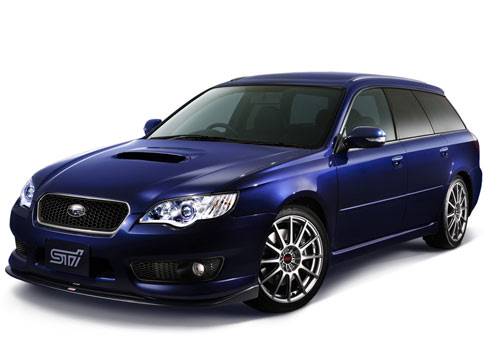
As the Big 3 American car makers outlooks move from bad to worse and the global car market slows, its reassuring to know innovation and planning for the future is still going on. Subarus plans are some of the most interesting, both in the near and long terms. Thanks to a new alignment with Toyota and the companys own developments in diesel and electric vehicle technology, the future at Subaru is sporty, hybrid and electric.
The upcoming Subaru-Toyota joint-venture sports car will be a Subaru at heart, though Toyota is expected to have input on the cars appearance. Subaru fans can rest assured that the companys characteristic looks wont be toned down by Toyotas numbing influence. Toyota recently announced its intention to increase its interest in Subarus parent company, Fuji Heavy Industries, to 16.5% from the its current holdings of 8.5%.
Speaking with MotorAuthority, Dominick Infante, national manager of product communications for Subaru of America said, Were still designing our own products. With this new sports car thats coming about itll be a Subaru chassis and engine. We think well be able to maintain the Subaru-ness of our products.
Infante indicated that though it is still too far out to talk about specifics, the Toyota-Subaru sports car is going to be a four-cylinder car, and that cars like the Hyundai Genesis Coupe would be in a larger segment.
The car will be built at a new factory setup for the purpose, and both companies will sell versions of it under their own brands. Subaru will reportedly be designing the platform, while Toyota will handle the exterior. Reports indicate the car is likely to be powered by a 2.0L boxer engine and will be available as both a coupe and three-door hatch.
Its even possible the car could be offered in a high-performance configuration with Subarus Symmetric AWD and a 300hp engine, though these details are just speculation and have not been confirmed by Subaru or Infante.
Theres also been some speculation that the RWD sports car might cut into sales of Subarus existing line-up as its usually considered a sportier, more enjoyable alternative. Infante doesnt see that happening.
We believe its going to be something thats smaller. Its going to be a two door. Obviously youre either a sedan or a hatch buyer when youre looking at the 5-door WRX or the 4-door sedan. We think its a separate market, he said.
One thing that will appeal to many current Subaru owners and future buyers is a diesel engine option in the WRX. Though there is still no timeframe for the diesel WRX, Infante did speak warmly of its drivability, noting its quietness.
At full throttle in this car its designed to be very very quiet. That Subie thrum is still there but with the work that the engineers did on quieting the car you really only notice it at idle, under acceleration its just really quiet in there, said Infante.
The potential fuel savings for the diesel WRX engine is one of its key selling points, and though Infante couldnt provide any specifics, he compared the car to the diesel-powered Outback, which achieves 38mpg on the highway, noting that the move to diesel results in no small increase in fuel economy.
A hybrid would be another way to improve fuel economy, and thanks to the alliance with Toyota, Subaru now has access to leading edge technology that could soon make production reality.
Subaru is not afraid of Toyotas influence - the company will remain a separate entity with its own design style and its own products. But thats not to say that the two companies wont be sharing technologies and resources.
We think its definitely a positive. Were already sharing engineers, and we can only benefit, said Infante.
A Subaru hybrid is also definitely in the works, but its still too soon to get any specifics on what sort of vehicle it will be. Nevertheless, the company is sure all of its cars will maintain their characteristic Subaru quality into the future. Expect it to feature a signature symmetrical AWD system and seating for five.
Alongside its work with Toyota on a new hybrid, Subaru is also working on its own programs to lay the ground work for a pure electric car with its R1e program.
Although the R1e is not a product that will ever be sold to the public at large, it is a test bed for the sort of technology Subaru thinks will be necessary to develop a future where pure EVs and plug-in hybrids are a serious option for all driving needs.
One of the most interesting developments with the R1e project is the quick-charging station. Essentially a standalone unit, the chargers can top an EV up with a full charge of electrons in just 15 minutes. While thats about two or three times as long as it takes to put a full tank of petrol or diesel in a car, its still a significant improvement on the overnight solutions now prominent. Even better, the system can be retrofitted to existing locations for quick and easy expansion of the infrastructure.
Unlike hydrogen or something along those lines, these power stations can be put everywhere, hooked up to the regular grid, said Infante. Theyd probably cost about $30,000 to add these on. You could put them in the parking lot of an existing gas station. Its not that it needs all this great new technology, its just essentially the interface that would have to be customized.
